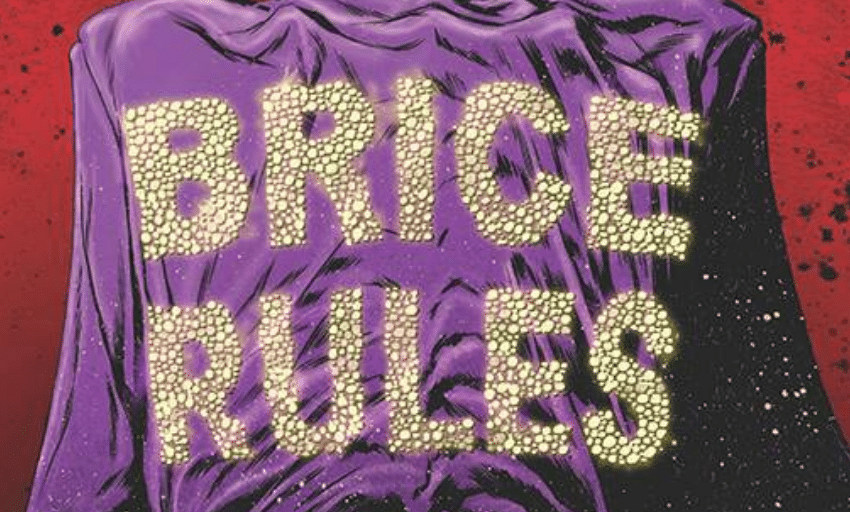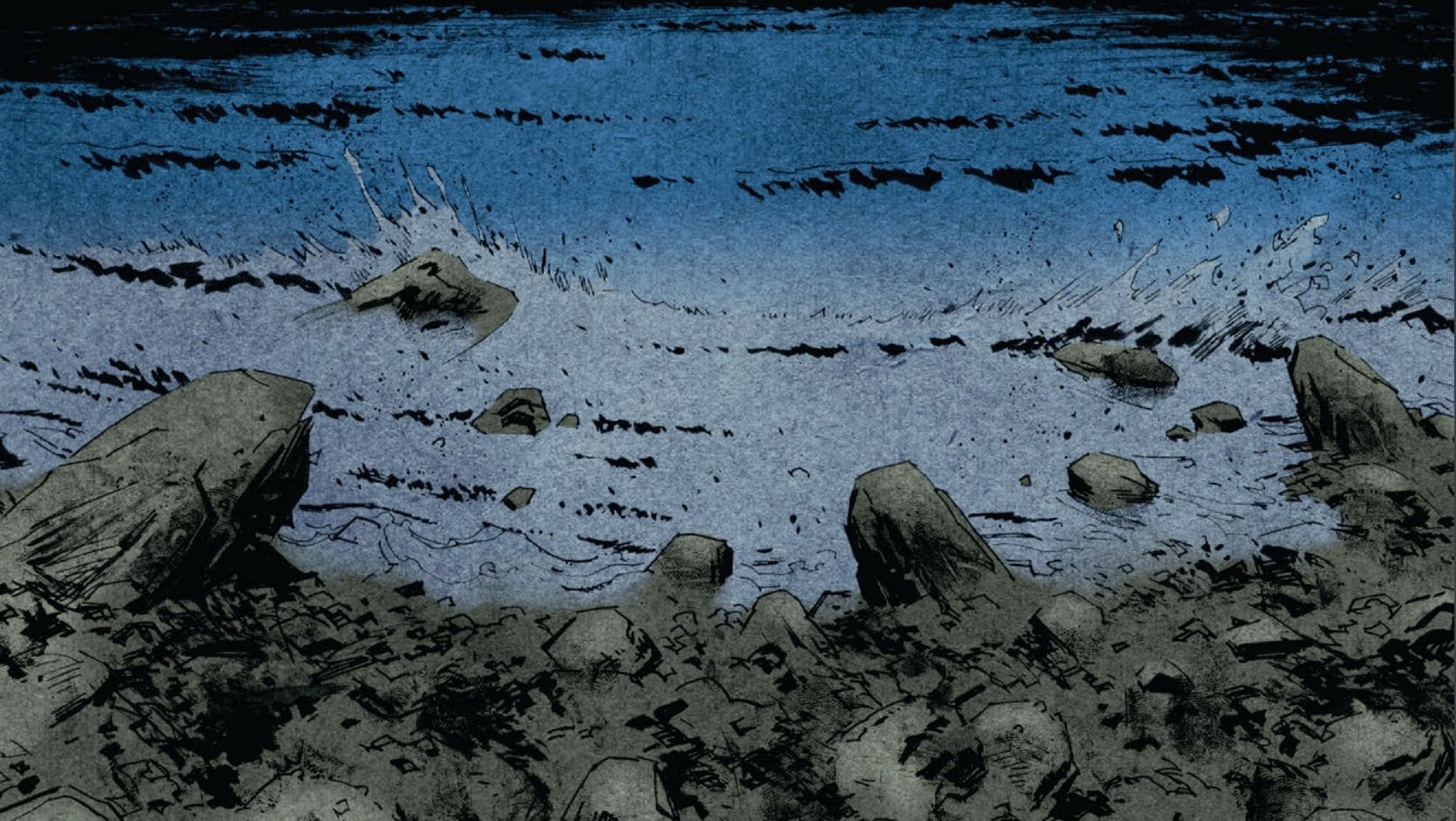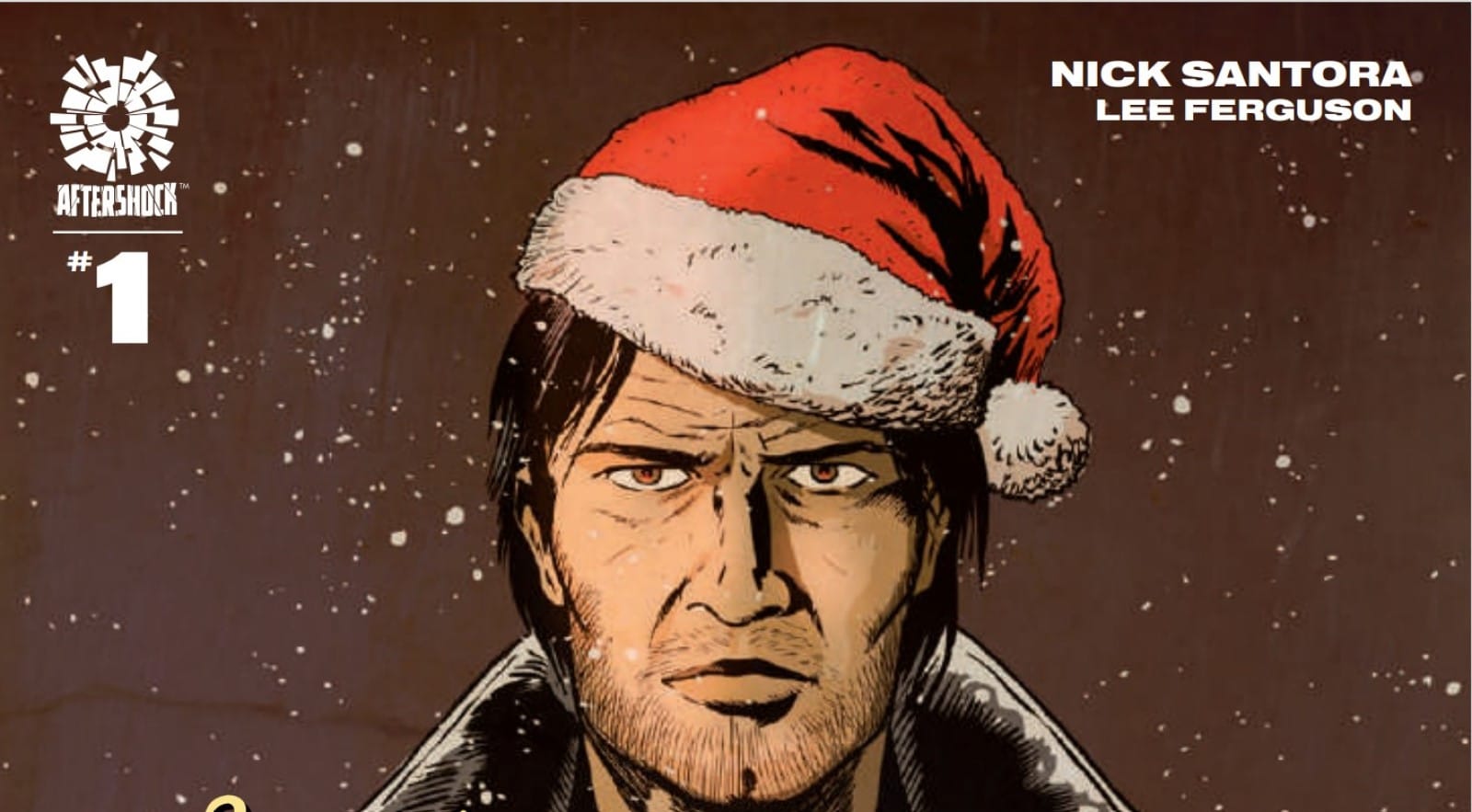Long as you keep ‘em way off balance, how can they spot you’ve got no talents? It’s a tale of stand-up comedy, spirit possession and the eternal, exacting price of fame in Knock ‘Em Dead, a five-issue miniseries by writer Eliot Rahal, artist Mattia Monaco, colorist Matt Milla, letterer Taylor Esposito and publisher AfterShock.
Will Nevin: Boss, to what extent does your “day job” — in whatever time you have to earn a living that doesn’t include managing, promoting and occasionally curtailing the more deranged elements of your merry band of cult members — involve sales? This is going somewhere, I promise.
Zachary Jenkins: It’s a portion that’s grown all-encompassing at this point. When I started my career in engineering years back, I did absolutely nothing that involved sales. However, as time went on, I got more and more involved with it, learned the song and dance, until a few months back when I put engineering behind me and moved into sales full time.
WN: I ask because — and feel free to disagree — sales, to me, seems like performance art; you’re doing a dance and stretching out a smile in hopes of pushing that product. There might be some aspects of your true personality in that performance (some amplified, some suppressed), but it’s performance nevertheless. You know, I think a lot about my job as a college instructor and how much of that is spectacle — hell, even my work here is a show, a little razzle dazzle. And it’s all fueled by ravenous ego and a contradictory deep-down hunch that it’s all fluff and fluttery nonsense and that I really don’t know a goddamned thing.
So that’s where I begin with Knock ‘Em Dead, this honest story of what happens when a lack of talent runs squarely into an ego that demands attention. It’s got issues — namely that it feels like a 10-issue maxi stuffed into a traditional mini — but it spoke to me on a real primordial level.
ZJ: You’re spot on with the performative nature of the work. There’s a weird nature to any act of labor where you’re trying to be funny. No one does that to not get noticed. You crave that validation, the idea that, at least for these five minutes, all eyes are on me. Knock ‘Em Dead plays with a lot of those ideas, but for me, the joke just didn’t land.
WN: That is one hell of a way to phrase it considering the source material we’re talking about here. What were your expectations coming into this, and where did this fall short for you? For me, I wanted something real, something confessional given what I know of Eliot Rahal’s past experience as a standup because, again, 65% of my life is a Billy Flynn routine.
ZJ: I think my expectations going into this weren’t fully aligned with what the team was trying to do. Back in my review of the first issue, I said the title didn’t pay off the promise. I still more or less stand by that, but I question how much of that opinion was colored by what I thought the book would be rather than what Rahal and Mattia Monaco wanted to say. I wanted a book about standup, maybe a tragedy, sure, but still about that experience. I don’t think that’s what was delivered, but I don’t know where to point the finger for that.
The Setup

WN: I prattled on up there about my general thoughts on the book — what’s your big picture take on it?
ZJ: My biggest takeaway from this book was that it had a massive identity crisis. If it was a book about the mental toll of failure, I think there would be a story here. If it was about possession? There’s something to be said. The cost of fame? Sure. However, I don’t think Rahal brought all these discrete elements together in a satisfying way.
WN: We certainly can’t fault Rahal for a lack of ambition in this series as it tackles, like you said, a bunch of ideas and has a full character arc for its main character. But as I mentioned, my biggest gripe — and we’ll get into this later as we touch on the conclusion — is that it all feels so rushed. I want more time with these people and this world.
ZJ: Part of it, I think, comes from the supernatural angle. Brice dies in issue #1 and is eventually possessed by the ghost of Lenny Bruce. This is all intermixed with a rise-and-fall of fame story that is strong enough to stand on its own. Brice is already making bad choices in his life. Having a spooky spirit be there just adds complexity and page count that could have gone to deepening the main characters.
WN: The inclusion of Lenny Bruce was a real head-scratcher for me, especially as he’s used seemingly only to get our leading man Pryor Brice into drugs. Yes, that’s how Bruce died, but you could sub in any fake comedian with a taste for coke or heroin to get there — yet he was certainly not just any other dick with a mic: Bruce was on the very edge of comedy for his day, famously influencing both George Carlin and Richard Pryor. I’m not saying Rahal doesn’t know his history — given the backmatter in the series he most certainly does — but using Bruce here in this way doesn’t get all of that across.
ZJ: Comedy and heavy drug use have a long and tragic history. Showing my youth here, but I remember watching my dad’s VHS recording of Saturday Night Live’s “The Best of Chris Farley.” I can also remember my dad telling me that he died far too young, and eventually learning how. I understand the need to explore that dark side of the industry, but I’m not sure this book blanched it with the larger plot to make everything work.
WN: Now that I have Peacock for the WWE I can stand and my wife to watch The Office, I’ve been spending a lot of time with the SNL of the Phil Hartman-Adam Sandler-Farley era. Did you know they brought him on as a guest host about six weeks before he died and laughed at his substance abuse in the cold open? That’s a direction the book could have taken — examining how we encourage the self-destructive behavior and addictions of people like Farley and, a generation before him, John Belushi, only to mourn them without any introspection when they’re gone.
ZJ: One thing that did work for me throughout is Monaco and Matt Milla’s art. There’s a griminess to every page. Partly from Monaco’s heavy inks, but partly from Milla’s use of texture and shadow. Monaco is a fabulous character actor. This book requires a ton of subtle expressions and Monaco lands them. That may be why I got hung up on the supernatural side. The book shines when it’s just people being people.
WN: The art in the first issue blew me the fuck away. The visual storytelling when Brice eats it on stage? Those were some of the best single panels I’ve seen all year. But it seemed like the series got away from that as it progressed and got more exposition-y.
The Punchline

WN: The miniseries ends in its fifth issue with a 15-year time jump into the future: Brice is no longer the young and hungry upstart (with a dead and better comedian riding sidecar in his brain), but now he’s the aged, fading star in the “cynical blockbuster” portion of his career. Most books wouldn’t have the guts to make that sort of jump, so I have to again admire the ambition — yet I feel like there’s a whole bunch left unexplored.
ZJ: I’m of two minds here. On one hand, I think the story structure of this issue works real well. The jump lets it nearly be a stand-alone horror story about what Brice was willing to sacrifice for success. The timeline weaving from past to present allowed readers to understand new facets of his life on every page. On the other hand, if this was the ending they were building for, I think Rahal left a lot unsaid.
Perhaps this was a book that just needed another issue. We got the rise of Pryor Brice, we got the fall of Pryor Brice, but we didn’t get that juicy part in the middle where he actually had success. It’s like doing a story without a second act, you need that time to establish how the characters change. Jumping to where we end feels like a shortcut.
WN: It lands in the absolutely right place, and I can’t complain about the overall arc, but this does feel like the wrapup of a book like Ringside or American Carnage — series with a reasonably paced progression before someone said, “Yeah, you gotta finish this ASAP.”
And while this didn’t get the hook during its run, I do think this falls more on the publisher rather than Rahal. Yes, he went into this knowing he had five issues, but goddamnit, someone at AfterShock should have looked at this pitch and realized there was more here and taken a chance on at least eight issues. This business, boss. It ain’t right. But I guess what we have is better than the alternative: three or four issues in a first volume ending with a cliffhanger that never gets paid off because the sales aren’t there for a second run.
ZJ: Not to keep pointing to other things I’ve written, but I’ve talked before about rushed finales in smaller publishers. It frustrates me because talented creators, like Rahal and Monaco, are forced to compromise their story to fit what this broken market can bear. What’s the risk to the publisher to put out an issue #6 if it will make the story better? Shops aren’t ordering deep on books without Batman in them, and the folks who would pick up a five-issue series aren’t going to shy away from a six-issue one. It’s a shame that the comics market can’t support a book like this, flaws and all.
But maybe that’s what stand-up comics and comic creators have in common: Both industries will break your heart.
There’s Always a Heckler

- The excellent cover of issue #5 seems like an homage to Eddie Murphy’s famous purple suit from his concert film Raw.
- I know it wasn’t the story, but I still kinda wish this went all the way and just had a skeleton doing stand up.
- Lenny Bruce, John Belushi and Chris Farley all died of drug overdoses at or before they were 40. Bruce, though, had many legal troubles beyond substance abuse, including facing criminal obscenity charges for his act.







